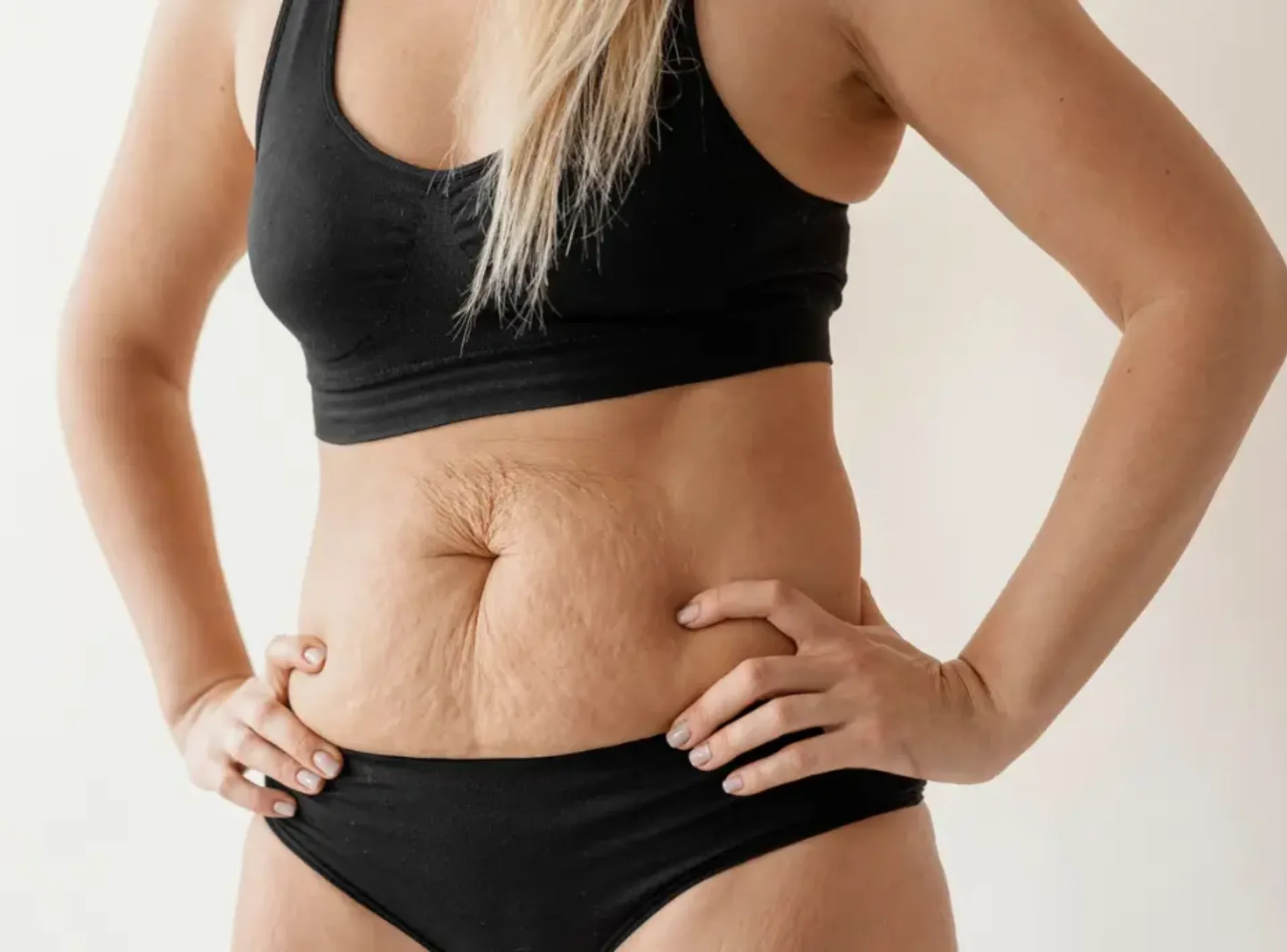Even if this isn’t your first child, pregnancy and childbirth are filled with new experiences and learning opportunities. There will always be something that surprises you, regardless of how thoroughly you plan and conduct your research. Diastasis recti is a condition that many women are surprised to learn about.
A condition known as diastasis recti occurs when the muscles in the abdomen split apart in the center of the stomach. Although this condition can affect anyone, pregnant or postpartum women are most likely to experience it. This is because the body uses the separation as a means of creating space for the developing uterus and baby.
This separation is actually regarded as a typical aspect of pregnancy, despite the fact that it sounds abnormal. The linea alba is a piece of connective tissue that lies between the two columns of muscles that comprise your abdominals. During pregnancy, this tissue is supposed to stretch, enabling the muscles to separate. Following delivery, it tightens once more, bringing the muscles back together.
But this condition only becomes a concern if, six weeks or more after birth, there is still a separation of more than 2.6 centimeters. It’s possible that the problem will be resolved on its own or with a little exercise, even at that point.
Tummy Tuck In Dubai
Tummy Tuck in Dubai is a popular cosmetic procedure aimed at removing excess abdominal fat and loose skin. Performed by highly skilled surgeons in world-class clinics, it offers safe and effective results. Ideal for post-pregnancy or weight loss body contouring, it helps restore a firm, toned abdomen.
BOOK AN APPOINTMENT TODAY
The Frequency Of Diastasis Recti
Diastasis recti is a very common condition, despite the fact that it is not discussed much. Most mothers will experience it to some extent. Within a year after giving birth, the condition will go away on its own for about half of these women.
Nonetheless, it is thought that a large number of diastasis recti cases remain unidentified. More mothers must be made aware of the illness in order for them to recognize the symptoms and receive the necessary care.
Health Problems Associated With Diastasis Recti
A bloated stomach is the most obvious sign of diastasis recti. Although diastasis recti is primarily a cosmetic issue, it can also lead to serious health issues. The following conditions may be exacerbated by both a weak abdominal wall and weakened abdominal strength:
- Indigestion.
- Pain in the back
- Incontinence due to stress
- A hernia
If you notice any of these problems, you should check to see if you have diastasis recti.
How To Test For Diastasis Recti
Working with a medical professional is the only way to receive an official diagnosis. However, you can perform an at-home test to help you determine if you would feel better making an appointment now.
This self-checkup at home is quite simple. Simply follow these steps:
- Place yourself on your back on a level surface, like the floor. Your bed is not a suitable surface because it is not firm enough.
- Your knees should be bent.
- Using your abdominal muscles in a crunch position, curl your chin toward your chest.
- Find the linea alba with your fingers. Move your fingers in a vertical line above your belly button, starting there.
- Try to apply light pressure as you move your fingers. If you can, this might be a sign of a separation.
- Try it again, assuming you were successful in pushing your abdomen down, and see if your fingers “sink” in easily or if you experience any tension.
- Check the gap to see how wide it is if they sink in easily. A finger’s width is regarded as normal. More than one suggests that something might be wrong.
Treatment For Diastasis Recti
Multiple treatment options are available for diastasis recti, including at-home exercises, physical therapy, and surgery.
Usually, you will start with physical therapy and exercise. These will help position you to get better results from surgery and make the procedure less invasive, even if they don’t completely fix the issue. Should these not produce the desired outcome, you proceed to have surgery to realign the abdominal muscles.
The procedure you would undergo is a tummy tuck for muscle repair, even though it is frequently considered cosmetic. Excess skin and fat can still be removed by the surgeon if the stomach tuck involves muscle repair. But they will also pull the rectus muscles closer together by suturing the connective tissue between them.
This is more complicated, more expensive, and takes longer to recover from than an aesthetic stomach tuck. However, your provider should cover the procedure, at least in part, if you have health insurance.
It is up to you how you decide to approach this surgery. In addition to offering a more complete tummy tuck or incorporating it into a full mommy makeover, your surgeon can focus solely on muscle repair if that is your preference.
Having said that, diagnosing is the first step. Discuss your concerns regarding diastasis recti with your physician.
MEET THE EXPERT DOCTOR
What Is Diastasis Recti?
Diastasis recti can be defined as the widening of the space between the left and right abdominal muscles. The left and right abdominals are separated by the “linea alba,” becoming overstretched in technical terms. This is a common occurrence during pregnancy, but it can also be the result of weight fluctuation or workouts that place excessive pressure on your abdominals. Although diastasis recti may resolve spontaneously postpartum, approximately 41% of women continue to experience this condition six months following childbirth.
Diastasis Recti Symptoms & Diagnosis
If you are uncertain as to whether you have diastasis recti, the following are a few common indicators to be aware of:
- Belly “pooch” or persistent bulging above or below the belly button
- Visible and palpable softness in the mid-abdomen
- The visible “coning” or “doming” of your belly when you lean back
- Pain in the lower back that is precipitated by particular movements
- Enhanced urinary incontinence, particularly during coughing or sneezing
- Inadequate posture
- Feeling as though your abdominal muscles are fragile
It is challenging for the majority of women to determine whether these symptoms are present during pregnancy. If you have diastasis recti, your health care provider can ascertain the severity of your condition and whether you have it postpartum. They will examine your abdomen for any gaps or deficiencies in muscle tone. Ultrasound may be implemented by certain healthcare providers to facilitate precise diagnosis. Diastasis recti is defined as an abdominal gap that exceeds 1.9 centimeters, or two to three finger widths.
Do I Need To Treat Diastasis Recti?
Although diastasis recti repair is not mandatory, the condition can have a significant impact on your overall health. If left untreated, it can elevate your likelihood of experiencing back pain, constipation, hernia, and an unstable core. It is also possible for diastasis recti to lead to pelvic floor dysfunction, which may manifest as discomfort during intercourse and other issues.
A cosmetic tummy tuck can significantly enhance your self-confidence and quality of life by repairing the separated abdominal muscles. Many patients who are concerned about their abdominal appearance also choose complementary procedures, such as nonsurgical CoolSculpting® or liposuction. The ultimate body contouring transformation is, of course, provided by a mommy makeover!
Tummy Tuck for Diastasis Recti
Although physical therapy and yoga are nonsurgical alternatives, a surgical tummy tuck (abdominoplasty) is the most effective long-term solution for the correction and repair of separated abdominal muscles, as well as the development of a stronger, flatter core.
In the course of a tummy tuck surgery, we reinforce and stabilize your core by reattaching the separated abdominal muscles and securing them in their proper position. In addition to repairing your abdominal muscles, a tummy tuck may involve the reshaping of your belly button opening to achieve a natural-looking appearance, as well as the removal of excess skin and fat. We make every effort to reduce the visibility of scarring.
Tummy Tuck Methods
At Perfect Doctors Clinic, we tailor our surgical procedures to accommodate your aesthetic objectives and requirements. A tummy tuck is never a one-size-fits-all procedure. The following are the various types of tummy tuck surgery that we perform:
- Mini Tummy Tuck: This less invasive method concentrates on the skin beneath the belly button. Consequently, it is only appropriate for patients who require minimal correction. It is typically not appropriate for patients who require diastasis recti repair.
- Standard or Extended Tummy Tuck: This method involves the complete reconstruction of the abdominal wall, the repair of weakened or separated abdominal muscles, the removal of excess skin and fat, the tightening of the skin above and below the navel, and the reshaping of the belly button. Excess skin and fat on the flanks and lower back are also addressed by an extended tummy tuck. Although both alternatives necessitate a longer recovery period, they produce more significant outcomes than a mini tummy tuck.
- Drainless Tummy Tuck: In certain instances, we may employ internal suturing to secure the abdominal skin along the abdominal wall, thereby eliminating the necessity for drains. This method is preferred by numerous patients due to the gradual dissolution of sutures and the absence of any inconvenience or discomfort that may be associated with surgical drains.
Best Plastic Surgeon in Dubai for Tummy Tuck
Best Plastic Surgeon In Dubai for Tummy Tuck is Dr. Perfect Celebrity, renowned for his precision and artistic approach. He specializes in creating natural, contoured results tailored to each patient. With a reputation among celebrities and international clients, he delivers exceptional care and transformative outcomes.
















































